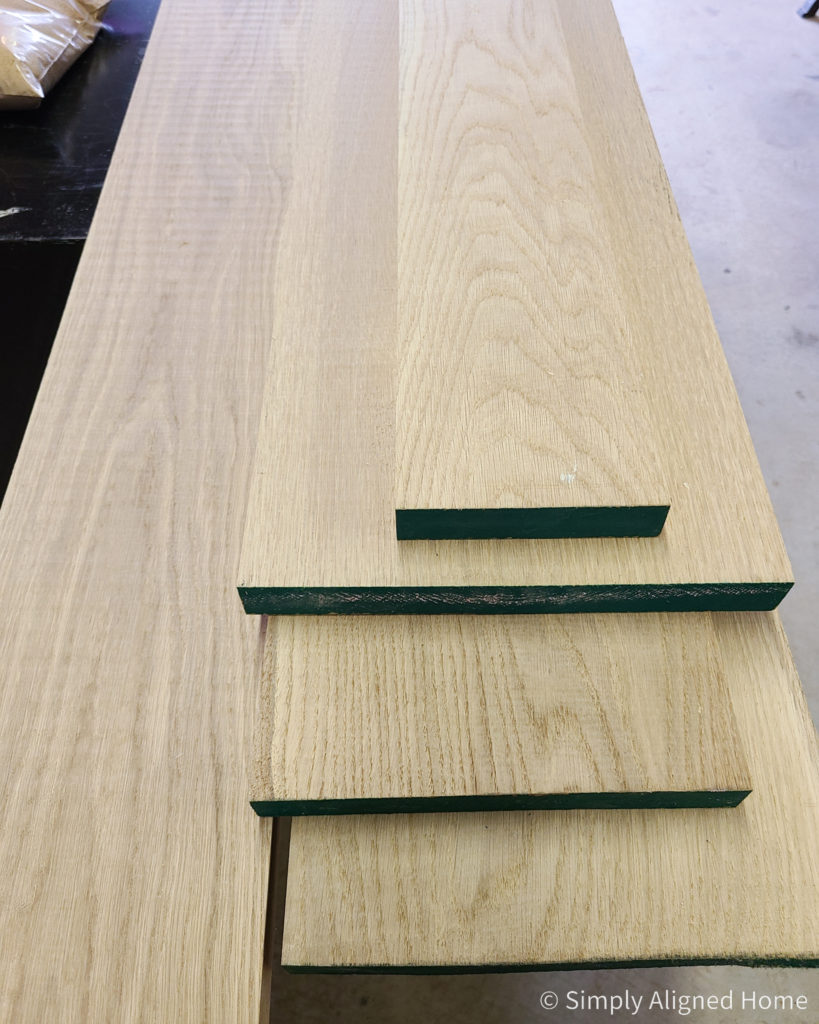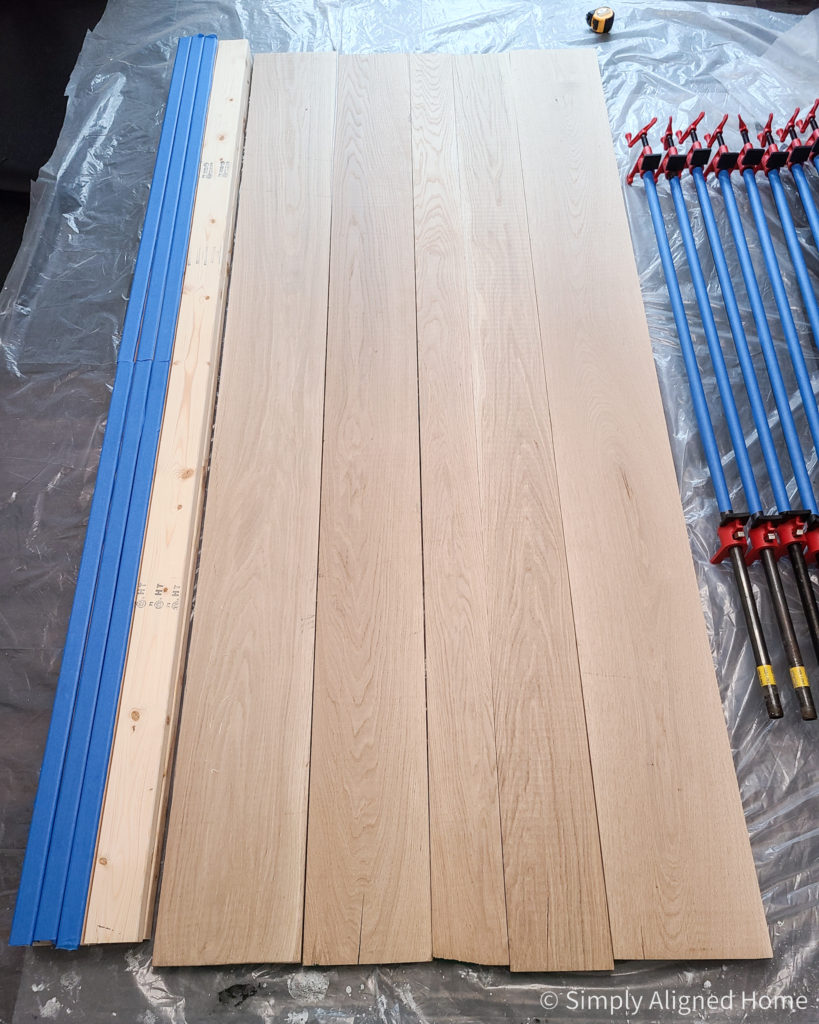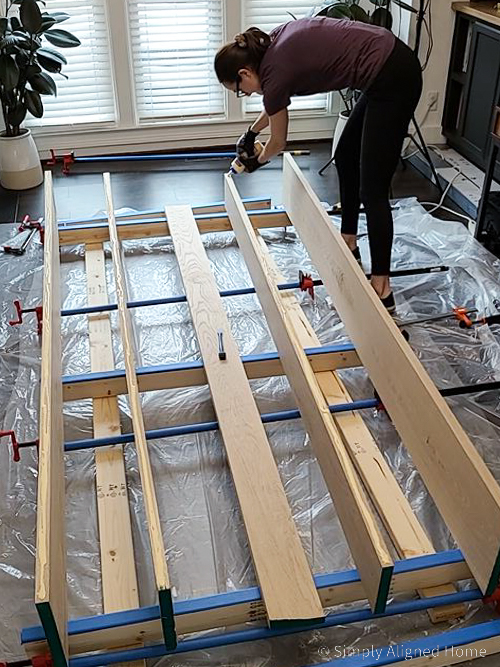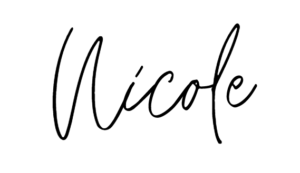Postingan Populer
How To Draw A Galaxy With Pencil Easy - How to: Draw Inverted Galaxy | Emre Süner - YouTube / Amazon com 3drose db 76827 1 galaxy nebula milky way galaxy.
Zak Recycled Teak Dining Table
Beautiful Dining Room Sets
Screen Room Drawings / Pin by youngsters tribute on Drawing hall tv cabinet | Tv ... - Download this free vector about loft interior isometric composition with indoor drawing room environment with soft seats windows and projection screen, and discover more than 13 million.
White Oak Dining Table Modern
Have you ever found the perfect piece of furniture for your home, but couldn't justify the price?! That's exactly how my modern white oak dining table became my first real woodworking project!

The design was clean and sleek and I figured it couldn't be that difficult to make. Since it was my first time working with wood that I didn't purchase from a big box store, I wanted to make sure that I didn't totally mess it up. Luckily, I have a very helpful woodworking friend that was willing to share helpful tips and tricks throughout the process. Looking back on the build, it was actually really simple! So here's how I made my white oak dining table.
Wood Selection
If you've never been to a lumber yard (like me), you might be a little confused by the lumber yard terminology. I knew I wanted white oak and thought that would be enough information…boy was I wrong! Luckily, I had a very friendly associate help me out.

I ended up buying 5/4 (1-1/4″ thick) white oak for the top and 8/4 (2″ thick) white oak for the base.
It is really important to consider how much waste you will have with each board once you rip the edges. You will want to purchase more wood than you actually need. For instance, I wanted my table to be at least 40″ wide, so I purchased roughly 48″ of wood. All of the boards I bought were 8′ long.
The lumber yard that I visited offers a service where they will plane the wood and rip one side of each piece for a small fee. Unless if you have your own planer, I highly recommend doing this!
Rip the Wood
Since the lumber yard was able to rip one edge of each board, I only needed to rip the raw edge of each piece of wood. Using my table saw, I ripped each piece so that I had a nice, clean line with no imperfections the entire length of the board. Each piece of wood ended up a different width…which really added to the character of the table!
Cut the Wood for Legs
The white oak boards were super heavy! I decided it would be best to cut the 8/4 boards into smaller, more manageable pieces for the base. I cut each of the boards to about 32″ long. The final length of the bases would be 29″, so this gave me an extra 3″.
Prepare the Clamps
**This post contains affiliate links to products that I recommend. If you purchase something through an affiliate link, I may receive a small percentage of the sale at no extra cost to you. I really appreciate your support.**
I did as much prep work as I could before I applied the glue to make my life easier. Once you apply the glue, you don't have long to get everything clamped together…so prep is key!
I started by putting painters tape on all of the pipe clamps where the pipe touches the wood. If the wood glue touches the pipe, it will leave a residue on the wood that is hard to remove.

The pipe clamps were used to hold the wood together width wise and I used cauls to keep the boards aligned vertically. I made very simple cauls using 2x4s that I cut a few inches longer than the width of the table. I also applied painters tape to the face of the cauls that touched the wood.

Once everything was taped, I laid out the clamps so they could quickly be secured once the glue was applied.


Glue the Table Top and Bases
The process for gluing the table top and bases were the same…I used wood glue and plenty of clamps! As long as you properly apply the wood glue and allow it time to dry, the wood glue joint will be stronger than the wood itself.

I applied wood glue to the boards and secured the boards together with all of the clamps. This is quite a process for one person, so I worked as quickly as I could. I started by loosely securing the pipe clamps and then the cauls. Once the cauls were nice and tight, I tightened up the pipe clamps.


I then allowed the wood glue to dry for 24 hours before removing the clamps.
Make the Stretcher
For the design of my table, a stretcher was necessary to stabilize the table. It would tie the two bases together and provide another point of contact for the table top.
Ideally, I would have used one piece of 8/4 white oak for the stretcher. However, the piece I purchased for the stretcher ended up being too warped to use. I did not feel like going back to the lumber yard for one board, so I headed to my big box store instead.
I purchased one piece of 1×12 oak which I ripped into three equal pieces. I glued them together, one on top of the other, to make the stretcher. I'm pretty sure I used every clamp I own..

Once the glue was dry, I ran the stretcher through my table saw to get nice, clean edges. I then cut it down to the correct length. The length of the stretcher was based on the length of the table top. I wanted the table top to over hang 15″ on each end, so I cut the stretcher 30″ shorter than the table top.
Cut the Table Top and Bases to Size
Before I did any finish work to the top and bases, I cut them all to the correct length. I cut the table top down to 91″ (this was based on imperfections in the wood) and the bases to 29″.
I did this using my circular saw. It's important to either use painters tape or a backer piece of wood to avoid tear out when making these cuts.

Notch the Bases for the Stretcher
This part was a total mental game for me. I did not feel comfortable using my table saw to cut out the notches and was very nervous to use my circular saw. I decided to try notching the first one out by hand using a chisel and hammer. While it did work, the notch was not perfect and it took me a while to get it notched out.

I finally gained the courage to notch it out with my circular saw…and it was so easy!! I clamped both pieces of the base together along with two scrap pieces of wood on the outsides. The scrap wood was used to prevent tear out. Clamping the pieces together would ensure that the notches were properly lined up on the bases.
I marked where my notch needed to be and adjusted the blade of my circular saw to the height of the stretcher. I then clamped a straight edge to the bases and made my two outside cuts first. Once the outside cuts were made, I made several smaller cuts the width of the notch.

Using a chisel and hammer, I removed the remaining pieces of wood from the notches. I tested out the notches using a scrap piece of the stretcher and removed material where necessary using the chisel. It's important that the stretcher fit snuggly in the notch.

Fill any Large Voids
I discovered that true woodworkers don't have to fill holes. There is little to no information on the internet about how to successfully fill voids in white oak. I wish I were that good…but I'm not. I had a few gouges in the wood and minor gaps in the seams that I did need to fill.

After lots of research and a few samples, I decided to go with a golden oak wood filler. While it did look like a close match once sanded, it did end up a little darker than the wood once sealed.

It was noticeable to me, but I had to point out to my husband every place that I used it. Below is how it looked once the table top was sealed.

Sand Everything
This was quite possibly the most time consuming part of the entire project. I am very new to woodworking and have not perfected my clamping skills. I was left with a few spots between boards that needed to be sanded down.
Using my orbital sander, I started with 80 grit sandpaper and worked my way up to 180 grit for the final sanding.

Route the Edges of the Table Top and Bases
For a more finished look, I rounded the edges of the table top and bases using my palm router and a roundover/ beading router bit. I then did one more light sanding of the edges with 180 grit sandpaper.

Attach the Stretcher to the Bases
I secured the stretcher to the bases using wood glue and 3″ long screws. I applied wood glue to the notches in the base and put the stretcher in place. The tolerance on my notches was so tight that I used a dead blow to get it in place.
Once it was in place, I drilled two holes per side through the stretcher and into the base using a countersink bit. This would allow the screws to sit just below the surface of the stretcher. I then screwed the stretcher to the base.

Drill Holes for Figure 8 Fasteners
In order to secure the table top to the base, I used figure 8 fasteners. I used to in the center of the stretcher and two per each base. The figure 8 fasteners that I purchased were 5/8″ wide. I used a Forstner bit to drill out a spot in the stretcher and bases for the fasteners so they sat flush. Once the holes were drilled, I used a small chisel to remove any access material that was in the way of the figure 8 fastener.

Seal the Table Top and Base
I seriously lost sleep over this step. I wanted a professional finish that would stand up to the abuse of my children without yellowing the table. I considered oils, oil based polys, water based polys…I considered it all! I thought I settled on a linseed oil, until I chickened out because I had zero experience applying anything other than poly.
That's when I ultimately decided to use General Finishes Water Based High Performance in a satin finish. I felt comfortable with the application and it didn't totally yellow the wood…win win!!

I applied the first coat of the General Finishes using a foam roller. I did a very light sanding using an old 220 grit (which is much finer than 220 grit) sanding sponge between coats. I wiped the surface wiped the surface using a tack cloth to remove any sanding dust. I then applied the second and third coat using a brush. I found that if I used a foam roller for the second and third coats, that it left the surface rough because of air bubbles.
Install Figure 8 Fastener on Base
Before I could place the table top on the base, I needed to install the figure 8 fasteners. I drilled a small pilot hole before screwing the figure 8 fastener to the base. It's important to drill pilot holes for the screws to prevent the wood from splitting.

Place Top on Base
This was quite possibly the most exciting part of the entire project…the first time I saw the table fully assembled! I made sure the table top was perfectly centered on the base before securing it. I made it so that the table top would overhang each end by 15″.
Secure Top to Base with Figure 8 Fasteners
Once it was in place, I drilled pilot holes into the underside of the table top and screwed the figure 8 fasteners to the top. That's it!!! My table was complete!!

This was my first real woodworking project and I could not be more proud! I learned so much throughout this build and cannot wait to tackle my next woodworking project! If you decide to try making this table, I would love to see how it turns out!


**Note: I am not a professional and do not claim to be an expert. Please be sure to always read instructions for all tools and products. Safety is very important and should be your top priority. Wear necessary protection when using tools (eye wear, hearing protection, gloves, etc.) and dust masks when sanding or cutting. Simply Aligned Home is not responsible for any injury or damage.**

Source: https://simplyalignedhome.com/how-i-built-my-modern-white-oak-dining-table/
- Dapatkan link
- X
- Aplikasi Lainnya
